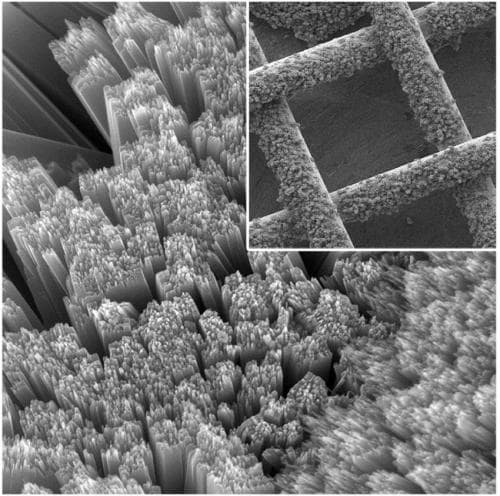Solar Cell Doubles As Rechargeable Battery In New Device Invented At Ohio State University
In a groundbreaking research work at the Ohio State University, a team from the department of Chemistry and Biochemistry has come up with a new device that works as a solar cell as well as a rechargeable battery. What is now being called the 'world's first most-rechargeable solar battery', the new hybrid device from OSU researchers has potential to significantly lower the costs of renewable energy production by up to 25%, if it goes into mass production in the industry. Yiying Wu, a Professor at Ohio State and his team has been able to successfully do a test run of the innovative new breathing battery. Why do they call it that? Let's find out by seeing how the solar battery functions.
The team has integrated the functions of capturing sunlight using solar panels and storing the energy in a battery into a single device. Mingzhe Yu, a doctoral student at the University designed a permeable mesh solar panel using titanium gauze. By allowing air to pass through this mesh or gauze inside the battery, the researchers let the electrons transfer between the solar panel and the electrode. The electrons enable chemical decomposition of lithium peroxide into lithium ions and oxygen. Th lithium ions are stored in the battery as lithium metal, whereas the oxygen is released in the air. Hence the name 'Breathing Battery'.

In the image, you see nanometer-sized rods of titanium dioxide which cover the surface of a piece of titanium gauze.
Interestingly enough, the research team used just 3 electrodes instead of four in their hybrid design. The solar panel mesh is the first, a thin sheet of porous carbon is the second and a lithium plate is the third. Between these three layers, there's electrolyte that contains iodide additive that is responsible for transportation of electrons. The team shares that the additive has enabled improvement in battery performance. The newly invented device has significant advantages as it eliminates the loss of electricity (100% electrons are saved as light is converted to electrons) within the battery design.
Here it's important to mention that this battery takes cue from KAir Battery - an air-powered battery that won $100,000 clean energy prize from the U.S. Department of Energy in 2014. The KAir battery was developed by Wu and doctoral student Xiaodi Ren. In the current tests, the team used photoelectron spectroscopy technique to determine what the battery's life is by finding out how well the electrode materials survive. They also charged and discharged the battery consecutively many times and are now confident that the the battery’s lifetime can compete with the other rechargeable batteries in market today.
Do take a look at he following video put together by NBC to find out more about the new solar rechargeable battery -
The team has integrated the functions of capturing sunlight using solar panels and storing the energy in a battery into a single device. Mingzhe Yu, a doctoral student at the University designed a permeable mesh solar panel using titanium gauze. By allowing air to pass through this mesh or gauze inside the battery, the researchers let the electrons transfer between the solar panel and the electrode. The electrons enable chemical decomposition of lithium peroxide into lithium ions and oxygen. Th lithium ions are stored in the battery as lithium metal, whereas the oxygen is released in the air. Hence the name 'Breathing Battery'.

In the image, you see nanometer-sized rods of titanium dioxide which cover the surface of a piece of titanium gauze.
Interestingly enough, the research team used just 3 electrodes instead of four in their hybrid design. The solar panel mesh is the first, a thin sheet of porous carbon is the second and a lithium plate is the third. Between these three layers, there's electrolyte that contains iodide additive that is responsible for transportation of electrons. The team shares that the additive has enabled improvement in battery performance. The newly invented device has significant advantages as it eliminates the loss of electricity (100% electrons are saved as light is converted to electrons) within the battery design.
Here it's important to mention that this battery takes cue from KAir Battery - an air-powered battery that won $100,000 clean energy prize from the U.S. Department of Energy in 2014. The KAir battery was developed by Wu and doctoral student Xiaodi Ren. In the current tests, the team used photoelectron spectroscopy technique to determine what the battery's life is by finding out how well the electrode materials survive. They also charged and discharged the battery consecutively many times and are now confident that the the battery’s lifetime can compete with the other rechargeable batteries in market today.
Do take a look at he following video put together by NBC to find out more about the new solar rechargeable battery -
What are your thoughts on the new research work? Share with us in comments below.
Source: Ohio State University
Source: Ohio State University
0
